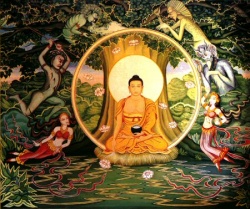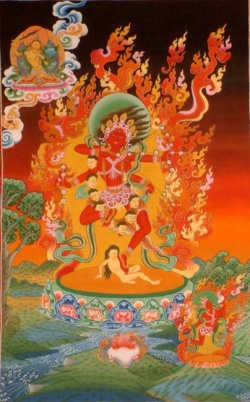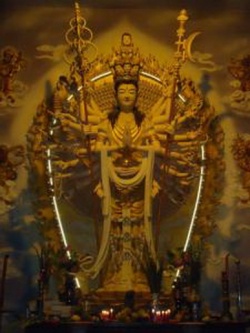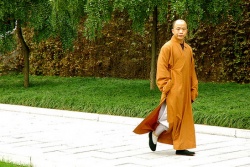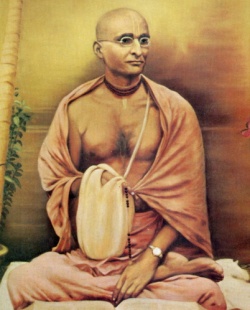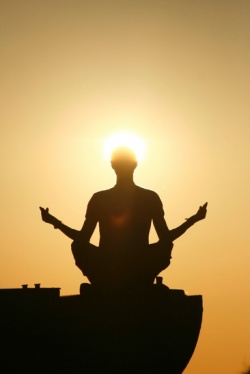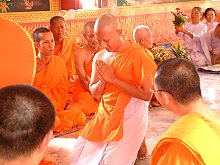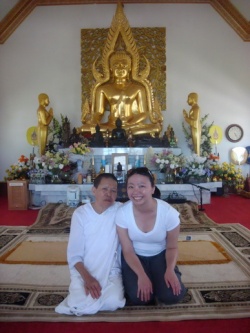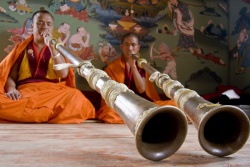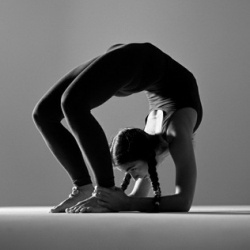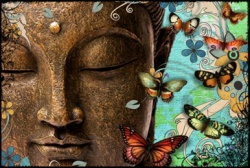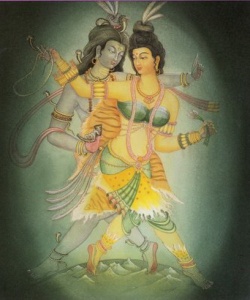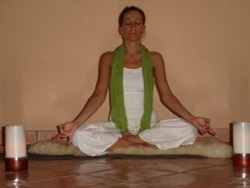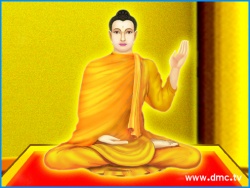Difference between revisions of "9 Jhanas"
m (Text replacement - "]]]" to "]])") |
|||
| Line 1: | Line 1: | ||
[[File:Ma-buddha.jpg|thumb|250px|]]<nomobile>{{DisplayImages|504|7|2287|705|426|2058|695|2451|2865|3263}}</nomobile> | [[File:Ma-buddha.jpg|thumb|250px|]]<nomobile>{{DisplayImages|504|7|2287|705|426|2058|695|2451|2865|3263}}</nomobile> | ||
| + | |||
| + | |||
| + | |||
| + | |||
| + | |||
| Line 381: | Line 386: | ||
In the [[Interest]] of providing an example, I will briefly discuss my first [[experience]] with the first five [[jhanas]]. | In the [[Interest]] of providing an example, I will briefly discuss my first [[experience]] with the first five [[jhanas]]. | ||
| − | I was living near {{Wiki|Dallas}}, Texas and attended a three day weekend [[Meditation]] [[Retreat]] at a [[Zen]] [[Buddhist]] [[temple]]. | + | I was living near {{Wiki|Dallas}}, [[Texas]] and attended a three day weekend [[Meditation]] [[Retreat]] at a [[Zen]] [[Buddhist]] [[temple]]. |
The [[Meditation]] program called for the participants to sit through the last night with no [[sleeping]]. | The [[Meditation]] program called for the participants to sit through the last night with no [[sleeping]]. | ||
| Line 393: | Line 398: | ||
I [[Thought]] to myself, I am going to sit cross-legged, no {{Wiki|matter}} how much [[pain]] there is, I will sit through it. | I [[Thought]] to myself, I am going to sit cross-legged, no {{Wiki|matter}} how much [[pain]] there is, I will sit through it. | ||
| − | Maybe I was so tired and in [[pain]] that I was getting delirious, but I did not care about my [[own]] [[health]] at that [[moment]]. I sat down and accepted the [[pain]]. | + | Maybe I was so tired and in [[pain]] that I was getting delirious, but I did not [[care]] about my [[own]] [[health]] at that [[moment]]. I sat down and accepted the [[pain]]. |
I focused directly on the [[pain]] and then to my long, deep breaths. My [[Concentration]] was very good toward my [[Breath]] as it eased my [[pain]]. | I focused directly on the [[pain]] and then to my long, deep breaths. My [[Concentration]] was very good toward my [[Breath]] as it eased my [[pain]]. | ||
Latest revision as of 15:06, 26 December 2023
The jhanas are altered states of Consciousness which are produced from periods of strong Concentration.
Although not Enlightenment experiences, they do provide much needed experience into the Path and explain much of the cosmology in an experiential way.
For example, each Jhana tends to correspond to one or more heavenly realms in the cosmology.
By attaining different levels of Jhana, the meditator increases the likelihood of being re-born to a heavenly plane of existence.
If you pass away while meditating at one of the jhanic levels, you will be re-born to that heavenly existence.
If you pass away when you are not in a Meditation session, but have attained to a certain level of Jhana in the past, you can still be re-born to one of those heavenly planes.
To reach the jhanic states of the four jhanas and the five immaterial, formless realms, one must choose a Meditation subject and use one-pointedness Concentration.
The subject can be a devotional statue, a colored disc, or simply your Breath.
As opposed to insight Meditation or vipassana, in this Meditation you focus all your attention on your subject.
The background views and noises must remain only part of the background.
You concentrate on your subject with eyes sometimes open and then closed.
When your eyes are closed, look for the after-image of your Meditation subject in your Mind.
Eventually you will reach a high state of Concentration with all of the five hindrances gone from your Mind.
The five hindrances are not permanently extinguished, but gone for the Meditation to allow the entry to jhanic states.
When your Mind state is free of the five hindrances and your Concentration is especially strong you enter the first Jhana of pleasant sensations.
It takes much practice and remember Patience is very important. You may not experience your first jhanic state until many years of practice.
The jhanas have been roughly translated as “states of absorption” or even “trance.”
The Christian mystics, like Teresa of Avila, called these altered states of Consciousness religious ecstasies.
Every contemplative tradition has some context for these states.
In voodoo religious practices and other traditional shamanistic religions, these states are highly valued and used regularly in their services.
Even in non-contemplative traditions there may be examples of these trance-like states.
For example, in some Christian churches and other charismatic type belief systems there are people who get so enraptured in the moment of their prayer.
They work themselves into a frenzy of Love and devotion which might include singing, jumping, and Dancing.
They may be able to pray and jump for hours, beyond their normal physical ability. This may not be fake.
The people may actually be in a trance-like state. Trance states can be induced through religious and cultural practices as well as through hallucinogens.
They can provide great religious ecstasies, but do not necessarily mean religious Wisdom or Awakening.
At high levels of Jhana super-normal powers may occur.
There are even reports of walking on water and other super human feats by gurus and Monks who had attained high levels of Jhana.
Having been one, you become many; having been many, you become one; you appear and vanish; you go unhindered through a wall, through a rampart, through a mountain as though through space; you dive in and out of the earth as though it were water;
you walk on water without sinking as though it were earth; seated cross-legged, you travel in space like a bird; with your hand you touch and stroke the moon and sun so powerful and mighty; you exercise Mastery with the Body as far as the brahma World.
- Samyutta Nikaya 12.70
And then The Buddha came to the River Ganges.
And some people were looking for a boat, and some were looking for a raft, and some were binding together a raft of reeds to get to the other side.
But The Buddha, as swiftly as a strong man might stretch out his flexed arm or flex it again, vanished from this side of the Ganges and reappeared with his Order of Monks on the other shore.
- Digha Nikaya 16.1.33
When you see the above quotes, repeated several times in the Buddhist scriptures, you realize that the feats and claims attributed to Jesus of Nazareth are no different (or better) than what the Arahants (Enlightened ones) of Buddhism can do.
You can interpret some of it as exaggerated claims to increase the stature of the leaders of a Religion, or you can see it as genuinely possible, through the powers of “Mind over matter.”
Mind over matter amazing feats are examples of Jhana.
An example is a petite mother who is suddenly able to lift a very heavy refrigerator off her child when it accidentally falls on the child.
The amount of Concentration and Love for her child places her into a higher plane of being, to a state of Jhana.
Some of the more exaggerated claims in the above quote may not be that far off.
For example, “multiplying” your Body one-hundred fold or one-thousand fold may have a scientific possibility. An example is a soccer (or football) game such as the World Cup. The game is televised around the World.
People are watching in almost every country. The “images” appear directly on live TV to people everywhere in their living rooms on the television sets.
This is nothing more than transmitting electrical signals from the cameras on the field to a satellite in space and then the signals go to countries around the globe.
We know that we are not that different than a pile of energy and signals.
A person who is attuned to every fiber of their Body may be able to “send” their electrical signals in the same way a camera does this and has the “images” appear in billions of television sets around the World.
Scientists have also been working with very small particles and are at the point of demonstrating that small particles (which are also forms of energy), may be able to pass through a solid surface, such as a wall.
(New Scientist magazine, 2006) This confirms that highly developed people (such as those with Jhana attainments), may actually be able to pass through walls and walk on water.
The Buddha did not allow his Monks and nuns to display their super-human powers, even if they existed.
The Buddha knew that it is virtually impossible to display these powers without the inflation and propagation of the ego.
But the jhanas do provide important stepping stones toward Enlightenment and also encourage us on the path.
The Buddha encouraged the practice of Jhana, but not the display of the super-human powers.
It is at advanced Jhana levels, that one may be able to see one’s past lives and even of others.
It is appropriately not talked about much, since these levels are difficult to achieve and when you do, who will believe you?
The Jhana levels and powers are not to be used for entertainment purposes, for showing off, or for profit, such as at a psychic store-front.
Since such usage would entail Attachment to sense desires and other unwholesome desires, the abilities would not work in a profitable-money-making endeavor anyway.
During the time of The Buddha, even he and his followers were careful about discussing their abilities:
Mahamoggallana, one of The Buddha’s foremost disciples was smiling as he came down Vulture Peak and when asked by another Monk, why he was smiling, the Monk responds,
Here, friend, as I was coming down from Mount Vulture Peak, I saw a skeleton moving through the air. Vultures, crows, and hawks, following it in hot pursuit, were pecking at it between the ribs, stabbing it, and tearing it apart, while it uttered cries of pain.
It occurred to me: It is wonderful, indeed!
It is amazing, indeed! That there could be such a being, that there could be such a spirit, that there could be such a Form of individual existence!
Then the Blessed One addressed the Bhikkhus thus: Bhikkhus there are disciples who dwell having become vision, having become Knowledge, in that a Disciple can know, see, and witness such a sight.
In the past, Bhikkhus, I too saw that being, but I did not speak about it.
For if I had spoken about it, others would not have believed me, and if they had not believed me that would have led to their harm and Suffering for a long time [by not following the Path).
That being, Bhikkhus, used to be a cattle butcher in this same Rajagaha.
Having been tormented in Hell for many years, for many hundreds of years, for many thousands of years, for many hundreds of thousands of years as a result of that Kamma, as a residual result of that same Kamma he is experiencing such a Form of individual existence.
- Samyutta Nikaya 19.1
The Buddha hesitatingly explains how these visions can be seen, knowing that others would not be so ready to believe him.
This discourse also shows that The Buddha and other advanced disciples could see the Kamma (Karma) ripening in others, as this butcher is tormented for the killings he did.
List of jhanas
There is no exact title of each level of Jhana (except for the formless realms), but some terms have been used here to help differentiate from one level to the next.
As you reach each jhanic level, your Mind will be tempted to remain at the previous jhanic state.
Simply keep a balanced Mind with no clinging to the pleasant or unpleasant and you will progress to the higher levels.
The nine levels of Jhana are:
- Delightful Sensations
- Joy
- Contentment
- Utter peacefulness
- Infinity of space
- Infinity of Consciousness
- No-thingness
- Neither Perception nor non-Perception
- Cessation
- (from Anguttara Nikaya 9.36)
The jhanas are the main part of Right concentration in The Noble Eightfold Middle Path.
The insight of vipassana Meditation can be found in Right concentration as well, but is primarily part of Right effort and Right Mindfulness of the Eightfold Middle Path.
The jhanas were well known during the time of The Buddha and before.
The teachers
The Buddha studied under before his Enlightenment were all familiar with the jhanas and taught him how to get to the first seven and then eighth Jhana.
But, The Buddha discovered that there was more to be known. He knew that the jhanas were not all that there is.
The five Hindrances to meditation which prevent access to entering the jhanas can be eliminated by the five factors of the first Jhana.
The first factor is one-pointedness Concentration.
By maintaining one-pointedness Concentration, you will not get distracted by sense pleasures or desires.
Focus on your Meditation subject, which is usually the Breath.
There are 40 Meditation subjects for Right concentration and any of them can allow access to the jhanas, but the common subject for most meditators is the Breath.
When rapture and Joy become noticeable, this eradicates the hindrance of aversion.
The Happiness and comfort that follows eradicates restlessness and worry.
As the Concentration gets stronger you aim very well at your subject and this eliminates sloth and torpor.
Since skeptical Doubt includes indecision, as you start to have sustained attention, the Doubt about the practice fades.
Some teachers only place the first four jhanas under the heading of 'Jhana' and the remaining four to five as the "formless absorptions" or as the "formless realms."
For ease in seeing the transition from one Jhana to the next, all nine are labeled as 'jhanas' since they are all inter-connected and are all Mental, Meditative absorptions.
In the Suttas of the Tipitaka the first four are labeled as 'jhanas' but are always followed by the remaining formless realms.
The First Jhana: Pleasant Sensations
The Concentration begins with [[one-pointedness] Concentration]] and then when the Concentration becomes strong you enter a sustained Concentration which is a continuous Concentration with no interruptions.
You start to enter the remaining jhanic factors of aiming, Happiness, and Joy or rapture.
You shift your attention from the Meditation subject to the Joy associated with your Concentration.
You do not cling to the sensations, but just watch them.
The experience can include some very pleasant physical sensations such as goose bumps on the Body and the Hair standing up to more intense pleasures which grow in intensity and explode into a state of ecstasy.
If you have pain in your legs, knees, or other part of the Body during Meditation, the pain will actually disappear while you are in the jhanas.
The pleasant sensations can be so strong to eliminate your painful sensations.
The Second Jhana: Joy
You proceed from the first Jhana to the second by keeping a balanced Mind with no clinging to the sensations of the first Jhana.
Then you shift your attention from the physical pleasure to emotional pleasure. The pleasurable sensations get put to the background and calm the Mind further.
You feel a great Joy in your Meditation and keep one-pointedness of Mind.
The Third Jhana: Contentment
You let go of the physical pleasures which changes the emotional pleasure from Joy to Contentment. You experience a more motionless, quiet Contentment.
The Fourth Jhana: Utter Peacefulness
The fourth Jhana is entered when the Mind remains equanimous to the third Jhana of Contentment long enough that you are ready to let go further.
There is no positive or negative feeling in the Mind or Body. Then there is an all pervading, deep peacefulness, with one-pointedness of Mind.
The Fifth Jhana: Infinity of Space
The fifth through the eighth jhanas are the “absorptions without Form.”
This is because they refer to states of Consciousness where there is no Perception of a Form or Body.
They correspond to heavenly realms which also have no Form or Body.
That is, beings re-born to the formless realms, which are some of the heavenly planes, do not have a Body, but do have pleasant existences.
You enter the fifth Jhana by remaining in the utter peacefulness state and then shift your attention to the boundaries of your being.
You focus your attention outward as if you are watching yourself from above.
You may feel like you are floating above your Body at first.
You put your attention on your Body so that it feels like you are filling the room.
This is expanded further and further so that you fill your whole neighborhood, city, country, continent, and then to space itself.
You find yourself in this huge expanse of empty space.
The Sixth Jhana: Infinity of Consciousness
You enter the sixth Jhana by realizing that the infinite space you occupy includes your Consciousness.
So you shift your attention to infinite Consciousness instead of infinite space.
You may feel “at one” with all nature and existence, but do not be fooled, this is not full Enlightenment.
Concentration is further increased and there is still one-pointedness of Mind.
The Seventh Jhana: No-thingness
The seventh Jhana is entered by realizing that the content of the infinite Consciousness is basically empty of any permanent nature.
We also realize that there is no “thing either.
There is nothing in the Universe that has any permanent essence to it. We realize that everything is in Constant flux.
The Eighth Jhana: Neither Perception nor non-Perception
The eight and ninth jhanas are difficult to discuss because they are so hard to describe in much the same way Nibbana is hard to describe.
This is because they are such heightened levels of Concentration and of the Path itself, that they must be experienced.
There is also very little to discuss with the eighth and ninth jhanas, since the Perception levels have become so fine and so subtle.
You enter the eighth Jhana by letting go of the sense of no-thingness and enter a very natural, calm place.
In the eighth Jhana there is very little recognition of what is happening, but you are also not totally unaware of what is happening.
There is such a peaceful state and you have gone beyond the duality of Perception nor non-Perception that it is easy to be fooled that you have experienced full Enlightenment. But there is still more to do.
The Ninth Jhana: Cessation
When you reach the limits of Perception, you realize that lesser Mental activity is better for your calm and peaceful state.
You enter a state of “cessation” of Consciousness where there is only a very subtle Form of Perception.
The meditator may appear to be Unconscious.
There have been reports of meditators having Heart beats as low as 20 to 40 beats per minute at this jhanic level. The nearest way to describe this state is something like a very deep sleep.
The eight and ninth jhanas are not full Enlightenment, but very close stepping stones to full Awakening.
Only those who are very close to being fully Enlightened can enter the eighth and especially, the ninth Jhana.
Unique experiences
Everyone will approach the jhanas in their own unique way.
It can take several years or even decades before having your first Jhana experience.
It is not something to pursue or chase after or to be impatient about. Otherwise it may never come.
One is not supposed to talk too much about jhanic experiences since it is virtually impossible to discuss your jhanic attainment or any powers from the jhanas without inflating one’s ego.
In the Interest of providing an example, I will briefly discuss my first experience with the first five jhanas.
I was living near Dallas, Texas and attended a three day weekend Meditation Retreat at a Zen Buddhist temple.
The Meditation program called for the participants to sit through the last night with no sleeping.
We continued our Meditation after dinner and attempted to go all night meditating, without sleep.
Most of the participants dozed off into sleep and their snoring became quite loud. In addition I had severe pain in my legs and knees from sitting so long that weekend.
I was so frustrated with the pain and the snoring noise. Then I realized my judging Mind was too much at work and I decided I needed to focus on my own practice and ignore the others.
I Thought to myself, I am going to sit cross-legged, no matter how much pain there is, I will sit through it.
Maybe I was so tired and in pain that I was getting delirious, but I did not care about my own health at that moment. I sat down and accepted the pain.
I focused directly on the pain and then to my long, deep breaths. My Concentration was very good toward my Breath as it eased my pain.
After a few hours all of a sudden, all the pain went away. I felt wonderful sensations and tingling all over.
The pain in my legs and knees were gone. I passed through moments of Joy, Happiness, rapture, Contentment, and peacefulness.
Then I felt as if I was floating through the air. I felt as if my Body was filling the room and beyond.
It was several years later before I even realized that I had experienced the jhanas.
I was originally attracted to the Theravada – vipassana school of Buddhism, but could not find a center near me. So I mostly practiced with Zen and Vajrayana centers.
It is primarily the Theravada and vipassana teachers who talk about the jhanas so at that time I had no Information or Knowledge of the jhanas.
Later when I learned of the jhanas I was pleased to find out that the experience was an important insight and not me losing my Mind.
